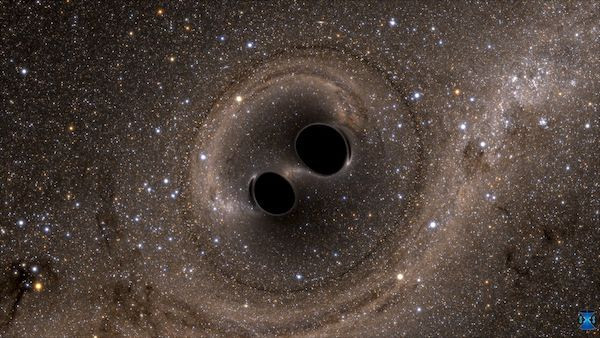How Do Pairs Of Merging Black Holes Form? Simulations Help Scientists Solve Longstanding Puzzle

On a scale of one to ten — one being the least calamitous and 10 being the most calamitous — black hole mergers would definitely score a hard 10. These complex events, when they occur, distort space-time around them and create ripples in its fabric — ripples that scientists call gravitational waves.
Although scientists associated with the Laser Interferometer Gravitational-Wave Observatory (LIGO) facilities in Washington state and Louisiana have detected gravitational waves created in two separate incidents of pairs of black holes merging, there is something that is still shrouded, quite literally, in darkness: How do pairs of merging black holes form in the first place?
Now, as described in a study published Wednesday in the journal Nature Communications, a team of researchers has taken a significant step toward solving this longstanding mystery. The study, which uses a newly-developed toolkit named COMPAS — short for Compact Object Mergers: Population Astrophysics and Statistics — attempts to answer how large stars that would eventually become black holes fit within a very small orbit.
The key problem here is that for two black holes to merge within the current age of the universe, they (and the stars they once were) must start out very close together — about a fifth of the distance between Earth and Sun. However, massive stars are loath to fit in such a small orbit, as they expand to be much larger in the course of their evolution.
According to the study, though, even two widely separated “progenitor” stars can interact when they expand, engaging in several episodes of mass transfer.
“The latest of these is typically a common envelope - a very rapid, dynamically unstable mass transfer that envelops both stellar cores in a dense cloud of hydrogen gas,” the University of Birmingham, whose researchers were involved in the study, said in a statement released Wednesday. “Ejecting this gas from the system takes energy away from the orbit. This brings the two stars sufficiently close together for gravitational-wave emission to be efficient, right at the time when they are small enough that such closeness will no longer put them into contact.”
Millions of years after this happens, two black holes are formed. A few billion years after that, the two objects merge into one.
In addition to expanding our limited knowledge of the end stages of black hole mergers, the simulations could also help us better understand what’s known as the “final parsec problem,” which refers to the failure of current theoretical models in predicting what the final stages of a black hole merger looks like.
“This work makes it possible to pursue a kind of ‘paleontology’ for gravitational waves. A paleontologist, who has never seen a living dinosaur, can figure out how the dinosaur looked and lived from its skeletal remains,” the study’s senior author Ilya Mandel, a professor of theoretical astrophysics at the University of Birmingham, said in the statement. “In a similar way, we can analyze the mergers of black holes, and use these observations to figure out how those stars interacted during their brief but intense lives.”
© Copyright IBTimes 2024. All rights reserved.






















